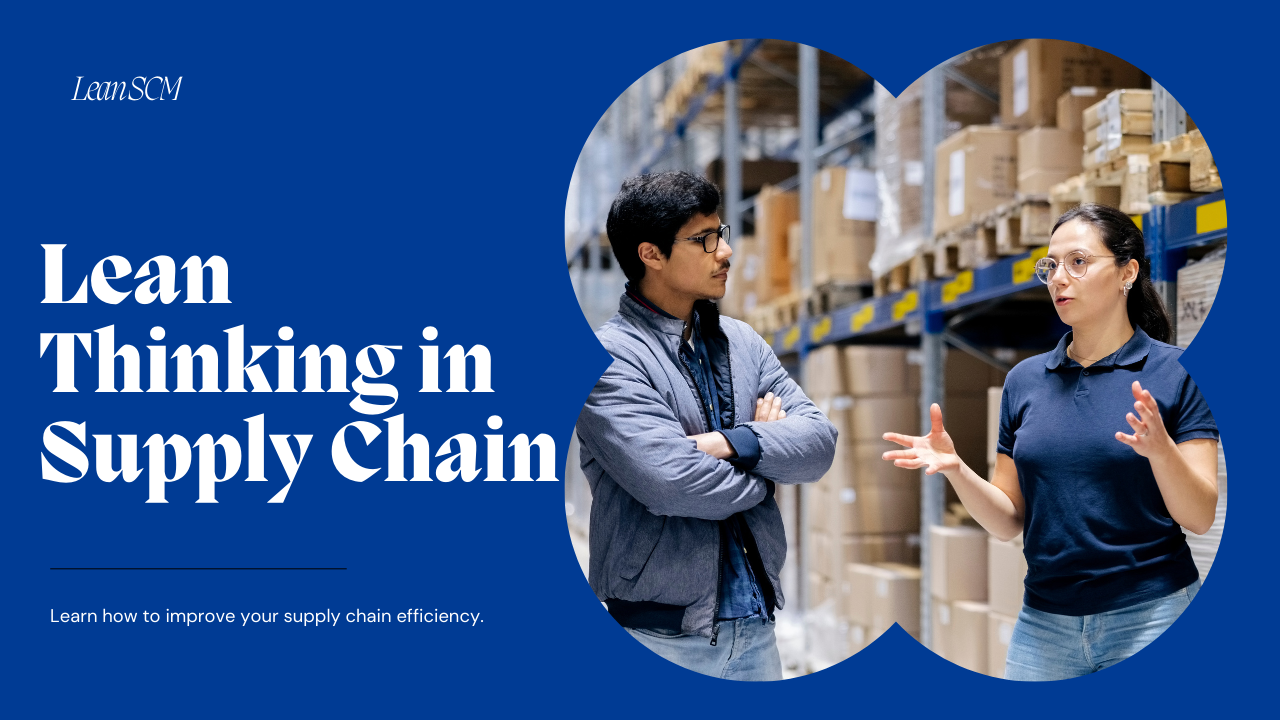LEAN THINKING Mastering Lean Methodology: Eliminate Waste & Boost Efficiency
In the dynamic realm of lean thinking, understanding and eliminating waste stand paramount for driving efficiency and value. From Toyota’s revolutionary practices, lean thinking has transcended industries, offering a blueprint for operational excellence. This exploration delves into the core types of waste identified in lean—Muda, Mura, and Muri—and their implications, alongside the foundational principles and strategic benefits of implementing lean.
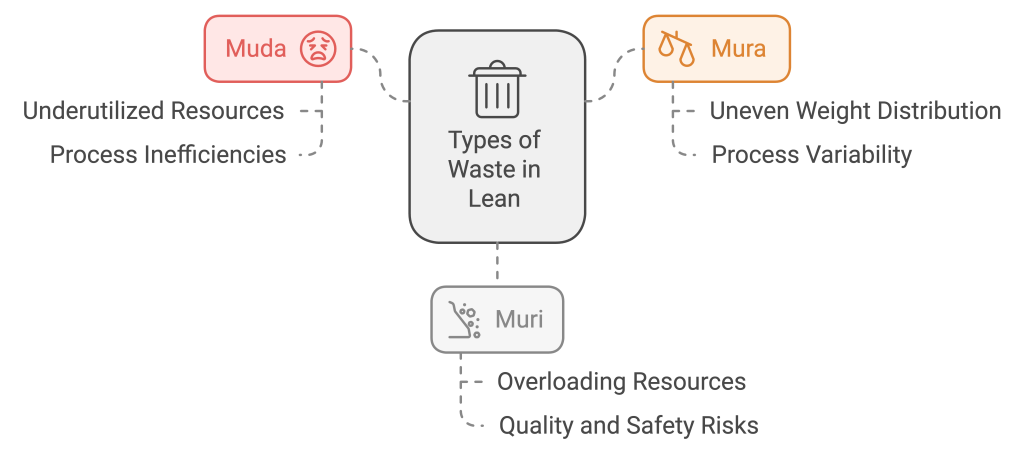
Unraveling Waste in Lean: Muda, Mura, Muri
Lean’s philosophy emphasizes the relentless pursuit of waste elimination, categorized into three distinct types:
- Muda: The epitome of wastefulness, where resources are not fully utilized. Imagine a truck’s capacity being underused—this underutilization represents Muda, highlighting inefficiencies within processes.
- Mura: Symbolizes imbalance or inconsistency in resource utilization, leading to operational inefficiencies. Uneven weight distribution in a truck is a metaphor for process variability that lean thinking aims to smooth out.
- Muri: Reflects overburdening resources beyond their limits, risking quality, safety, and performance. Overloading a truck beyond its capacity exemplifies Muri, underscoring the dangers of pushing systems too hard.
Lean’s Five Pillars: A Framework for Excellence
Lean is built upon five key lean thinking principles designed to optimize value and eliminate waste:
- Specify Value: Understanding customer needs ensures that every process adds value.
- Identify the Value Stream: Mapping out all steps in the process to visualize and eliminate non-value-adding activities.
- Create Flow: Ensuring smooth operations by removing obstacles that cause delays and inefficiencies.
- Establish Pull: Shifting from a push (make-to-stock) to a pull (make-to-order) production system to respond directly to customer demand.
- Pursue Perfection: Committing to continuous improvement by consistently seeking ways to reduce waste and enhance value.
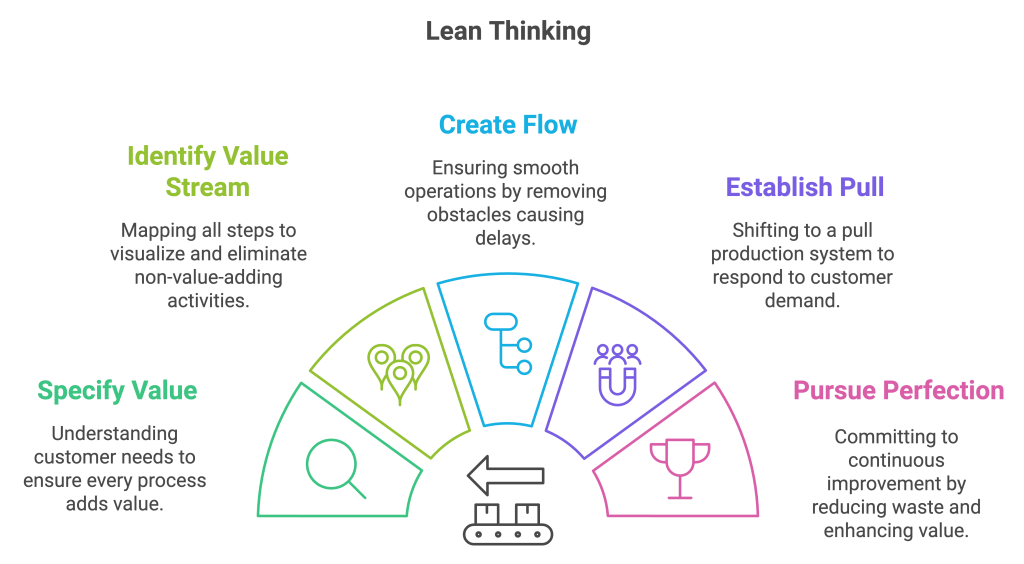
The TIMWOOD Framework: Identifying Types of Waste in the Lean Thinking
Lean identifies eight types of waste, encapsulated in the acronym TIMWOODS:
- Transport: Unnecessary movement of materials or products.
- Inventory: Excess products and materials not being processed.
- Motion: Unnecessary movements by people or equipment.
- Waiting: Idle time waiting for the next step in a process.
- Overproduction: Producing more than is immediately required.
- Overprocessing: Performing more work or higher quality work than is needed.
- Defects: The effort involved in inspecting and fixing defects.
- Skills: Underutilizing people’s talents, skills, and knowledge.
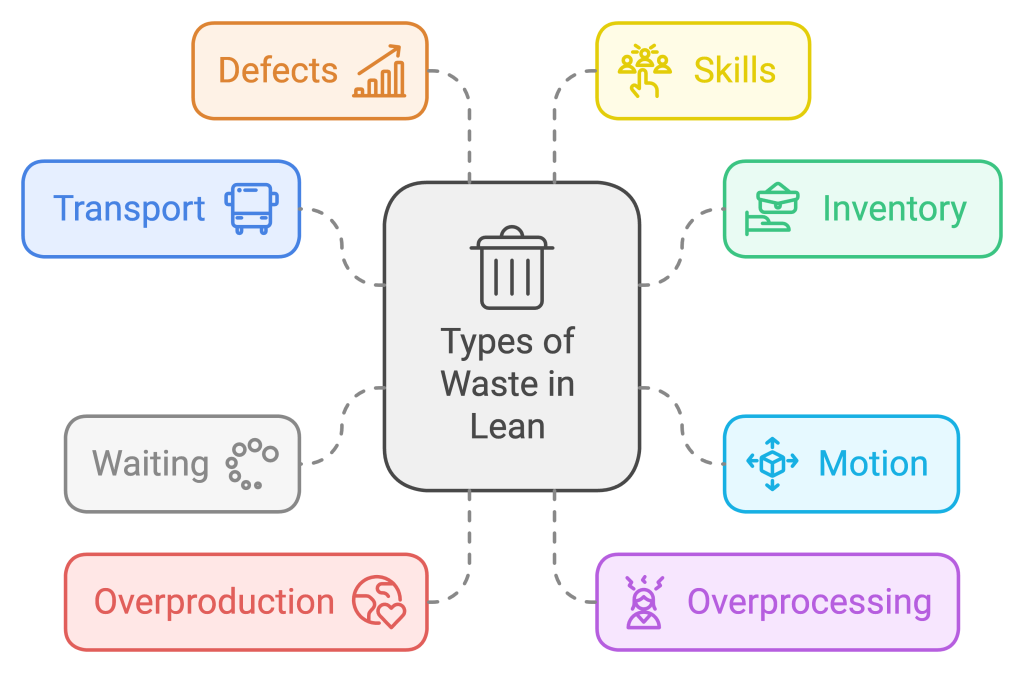
Implementing Lean: A Path to Enhanced Performance
The implementation of lean principles fosters a culture of efficiency and continuous improvement, yielding several benefits:
- Focused Efforts: Streamlining operations to focus on value-adding activities.
- Improved Productivity: Reducing waste leads to enhanced efficiency and output.
- Smarter Processes: Adopting a pull system ensures resources are utilized more effectively, matching production closely with demand.
Lean Thinking in Practice
Applying lean thinking across the supply chain, from suppliers to manufacturers and retailers, enhances overall performance. Each segment of the supply chain offers unique opportunities for lean interventions, promising reductions in waste and improvements in value delivery to the end customer.
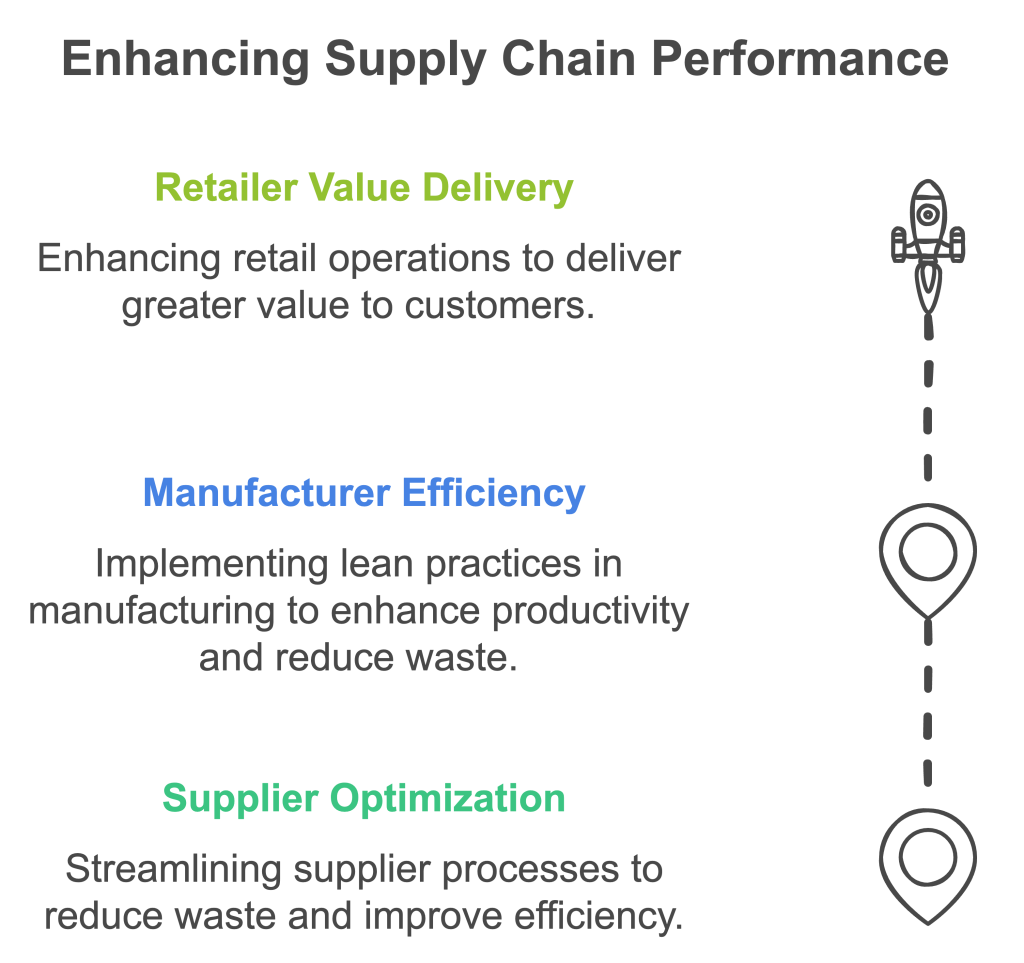
Reflection and Action
Lean methodology is not a one-time initiative but a continuous journey toward operational excellence. By understanding and applying its principles, businesses can significantly enhance their efficiency, reduce costs, and improve customer satisfaction. The question remains: Where will you start your lean journey?

